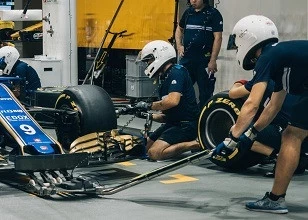How processes drive the success of flexible work
Uncover the nuances businesses need to be aware of with regard to switching between remote and office work setups
Add bookmark
The last few years have seen dramatic shifts in the way we work. For millions of workers, the pandemic changed working-at-home from a quirky choice for contractors and creatives to an essential mode for productivity.
The need to maintain business continuity has forced organizations across the world to find ways for workers to meaningfully participate in essential activities from remote locations. The shift was sudden and unexpected, but for many companies, not impossible. As a result, new ways of working were born.
Now, as the world finds its equilibrium in a new sense of ‘normal’, those changes are being reexamined and with that comes new challenges.
The biggest of these is the return to the office. While some organizations can continue to function remotely, others have encouraged a hybrid approach, or required a return to on-site attendance for their teams.
Although the reasons for these approaches vary, the potential disruptions and difficulties can have an impact regardless, affecting both people’s focus and productivity.
Pre-pandemic we were not as aware of how fractured our time could be in a busy office environment, with a day’s work potentially split between sitting in traffic, getting coffee, chatting with coworkers, getting lunch and working.
Now organizations have experienced dedicated work-from-remote locations, the impact of having everyone on-site again may be more noticeable.
In order to manage this transition, our processes need examining once again.
Flexible work needs flexible processes
Consider the way your processes play out at present. What assumptions are being made about people’s capacity to respond and within what timeframes?
Look at the expectations for those participating in the process and ask yourself if this step would look the same for someone working at home as it would for someone on-site.
There may be communication or handover aspects that require a nuanced approach depending on where the participants are located. Some processes may need variations or allowances written in to recognize those differences in execution.
Use the mode that works
Not every meeting needs to be in person and not every activity can be done as effectively remotely. Look carefully at what each activity or step in the process is trying to achieve and ask whether there is a distinction which needs to be made between doing it remotely or on-site.
Before you ask people to travel into work, consider costs in time, disruption and the frustrations of parking, for instance, and weigh up if the benefits support it. Similarly, before you schedule another Zoom call or Teams meeting, check that you can actually achieve the necessary outcomes through that channel or if it might be necessary to have people in the same room to collaborate or ideate together.
Recognize those distinctions in your process and build in an allowance for the requirements of each.
Keep your people in mind
Working from home has been proven to be a different kind of challenge for many. While it is easy to ‘switch off’ when you leave the office, it is much harder when that office is in a corner of the lounge or next door to your bedroom. Ensure you have good human resources processes in place to encourage healthy work practices, from good ergonomics, to appropriate breaks and support for remote teams.
Similarly, people have come to recognize the human cost of commuting and the disruption that an office can create in a workday. Account for the interruptions that come from desk-to-desk conversations. Some of those are beneficial for accelerating workflows and supporting good relationships but they can also mean broken concentration or disrupted activities.
Go with the workflow
The working environment for many will continue to shift as businesses find the rhythms and methods that work best for their people and processes. That evolution is perfectly in sync with the practice of continuous improvement though and a good process perspective can only help find those ways of making work effective and efficient for all concerned.
As your organization finds its new ‘normal’ keep your processes in step with the changes and support your teams to be successful however, and wherever, they are working.
How is your business faring in the new normal? Let us know in the comments below.




















